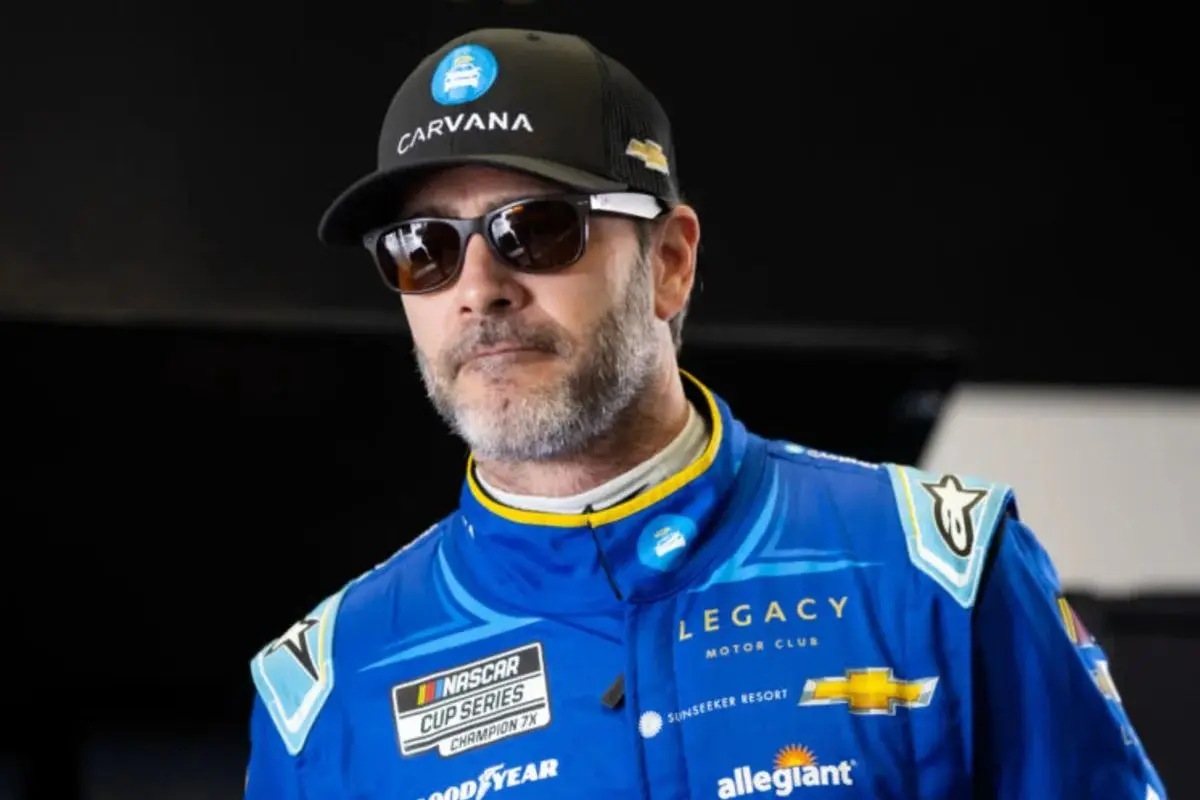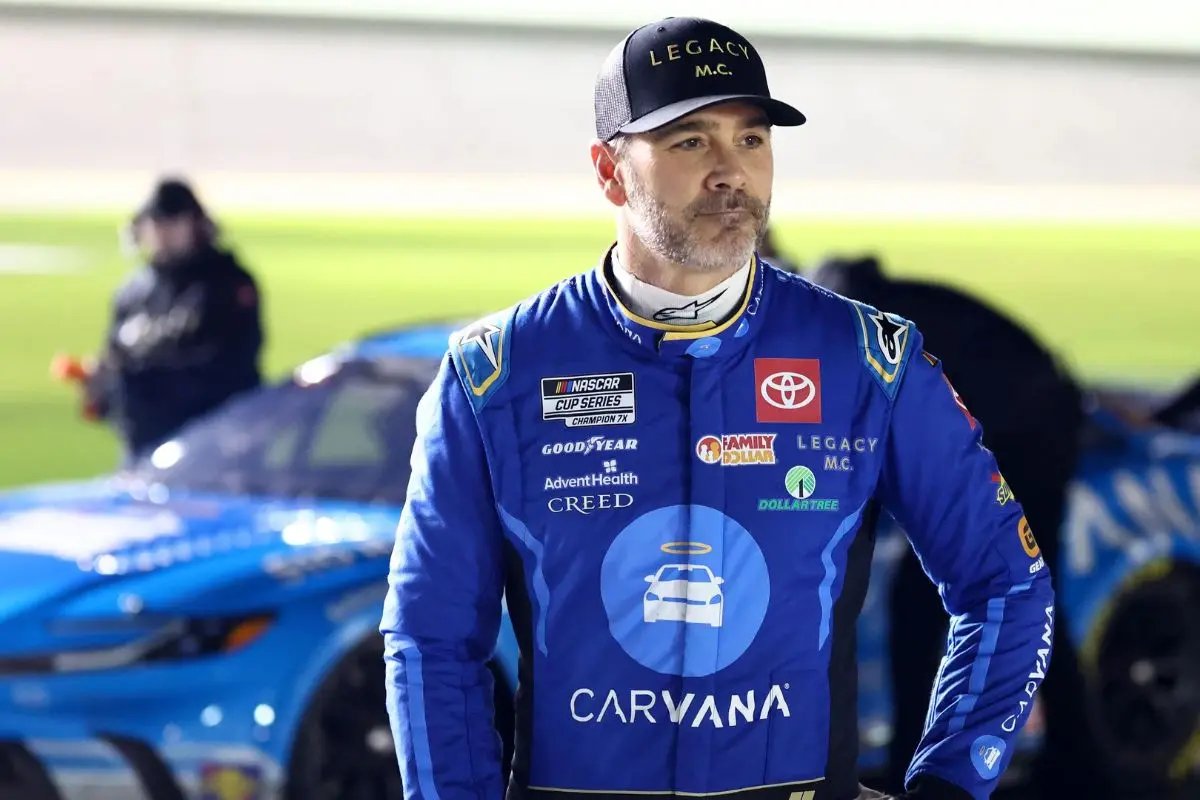Jimmie Johnson has sparked renewed outrage by backing NASCAR’s Next-Gen car amid persistent fan dissatisfaction. While he emphasizes its financial benefits for team owners, critics highlight notable performance issues, particularly regarding handling at short tracks. Johnson acknowledges the car’s limitations but asserts that its design promotes competitiveness and sustainability. His frank admission about personal branding shortcomings further complicates his stance. The ongoing debate raises questions about adaptation in NASCAR, suggesting deeper implications for the sport’s future.
Key Highlights
- Johnson defends the Next-Gen car’s cost efficiency, emphasizing financial stability for team owners despite mixed fan reactions.
- Performance issues, particularly with handling and side force, have led to dissatisfaction among drivers and fans alike.
- Critics argue that the Next-Gen car’s limitations negatively impact competitive racing, especially on short tracks.
- Johnson acknowledges the backlash but highlights the car’s potential for improved ownership dynamics and competitive balance.
- His candid admission about branding shortcomings reflects a desire to enhance fan engagement amid ongoing criticisms.
Johnson’s Perspective Across Eras
Although Jimmie Johnson stepped away from full-time racing in 2020, his return to the track in 2023 has provided him with a distinct vantage point to assess the transformation of NASCAR vehicles.
Johnson, with his extensive experience across different car generations, offers insights into how the legacy transformation of the sport has been shaped by driving dynamics and technology advancements.
His performance comparisons between the Next-Gen car and its predecessors highlight noteworthy shifts in handling and speed.
Johnson’s analysis reveals significant changes in handling and speed between the Next-Gen car and earlier models.
As an owner of Legacy Motor Club, he is acutely aware of fan reactions, which reflect a complex interplay between nostalgia and acceptance of innovation.
Johnson’s perspective emphasizes the necessity for adaptation in a constantly changing racing landscape, balancing tradition with progress.

Schedule Shifts Highlight Weaknesses
As NASCAR introduces shifts in its 2026 schedule, including the inclusion of the San Diego street course and a relocation of the All-Star Race to Dover, the vulnerabilities of the Next-Gen car become increasingly apparent.
These schedule impacts raise concerns regarding track suitability, particularly on road courses and short tracks. Limited side force in yaw and low-profile tires diminish driver feedback, leading to performance analysis that suggests the car’s handling could hinder competitive racing.
Chase Elliott’s remarks highlight a growing sentiment among drivers that the experience has fundamentally changed.
Historical context, such as the backlash faced during the Car of Tomorrow rollout, indicates that fan response may also reflect dissatisfaction with the current car’s limitations, complicating the future of NASCAR’s competitive landscape.
Johnson’s Firm Stance on the Next-Gen Cars
Jimmie Johnson firmly defended the Next-Gen car during a recent appearance on Kevin Harvick’s Happy Hour X, emphasizing the financial advantages it offers team owners. His perspective highlights the Next Gen benefits, particularly regarding cost efficiency, contrasting sharply with the fan backlash surrounding its short-track performance.
“It’s interesting being an owner and the way you look at your bottom line and understand that a spec car, you know, the way I look at it, is kind of a soft cap that we have in the sport. There’s only so many chassis we can have and only so many parts and pieces you can buy. So it does provide help.” – Jimmie Johnson
Johnson’s position highlights a significant racing evolution, where team owners prioritize sustainability in an era of rising costs, even as some fans lament the perceived loss of exciting competition.

Credit, Critique, and Adaptation
Acknowledging the complexities of the Next-Gen car, Johnson articulates both praise and constructive criticism regarding its performance and adaptability. He credits the car’s structure for facilitating his ownership dynamics and acknowledges its role in leveling the competitive balance, particularly for smaller teams.
However, he critiques the vehicle’s inability to gain side force in yaw, asserting that this hampers driver experiences and ultimately diminishes fan engagement. Despite ongoing aerodynamic research, improvements lag due to input from OEMs, complicating progress.
Johnson’s balanced perspective highlights the necessity for performance improvements while recognizing the current model’s limitations, emphasizing the importance of ongoing adaptation in the evolving landscape of NASCAR racing.
Johnson’s Candid Fault Admission
Reflecting on his off-track performance, Johnson openly confronted the shortcomings of his brand presence compared to peers like Dale Earnhardt Jr. He admitted to lacking the infrastructure necessary for strong fan engagement, focusing instead on maximizing on-track performance.
This self-reflection revealed a critical flaw in his approach: “I haven’t done a good job [with the JJ brand].” Johnson recognized that his racing legacy, marked by seven Cup titles, was not translating into market competition.
“I had infrastructure, but all my infrastructure focused on was doing the bare minimum outside of the car so I could do the maximum inside the car.… I haven’t done a good job [with the JJ brand].” – Jimmie Johnson
Significantly, he observed Earnhardt Jr.’s apparel outselling his, prompting the realization that his efforts were insufficient. This frank admission emphasizes Johnson’s intent to enhance Legacy Motor Club beyond a mere race team, signaling a tactical shift towards improving his personal brand in the competitive motorsports landscape.

News In Brief: Jimmie Johnson Sparks Outrage Backing Next-Gen Car Again
Jimmie Johnson’s steadfast support for next-gen cars has ignited notable debate within the racing community. While his perspective reflects a deep understanding of the sport’s evolution, the criticisms regarding the cars’ performance and schedule adjustments highlight ongoing challenges. Johnson’s frank acknowledgment of the vehicles’ shortcomings further emphasizes the need for continuous adaptation. Ultimately, his stance highlights the complex interplay between tradition and innovation in motorsports, prompting discussions that will shape the future of racing.
ALSO READ: Jimmie Johnson Opens Up on NASCAR Exit and Emotional Struggles!
Our Reader’s Queries
Q. Why did Lowes leave Jimmie Johnson?
A. “This is a setback for NASCAR and the team, but the broader issue extends beyond the sport,” Page explained. “Lowe’s has been facing financial challenges for some time, and investing more than \$20 million into a NASCAR program simply isn’t practical right now.”
Q. Who is Jimmie Johnson driving for in 2025?
A. Legacy Motor Club majority owner Jimmie Johnson started 17th in his second and final planned appearance of the 2025 season. Since retiring from full-time racing in 2020, the 49-year-old has made occasional starts, including nine outings last year in the No. 84 Toyota.
Q. Why did Jimmie Johnson switch to Toyota?
A. Johnson explained that the move is aimed at supporting the long-term vision of Legacy Motor Club, even if it brings short-term challenges. The seven-time Cup Series champion noted, “There are several long-term reasons why it makes sense for us to operate as a stand-alone team within the Toyota ecosystem.”
